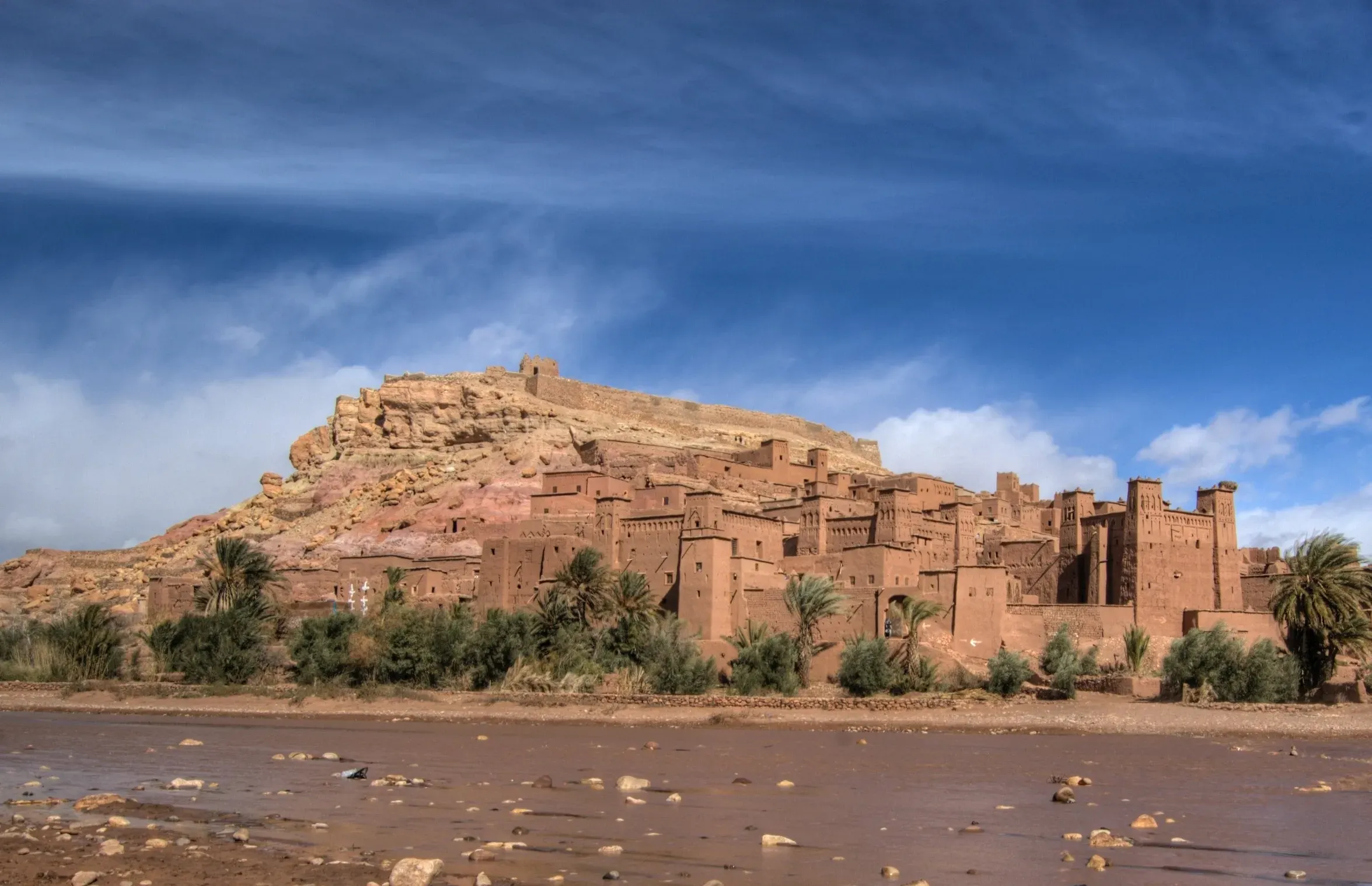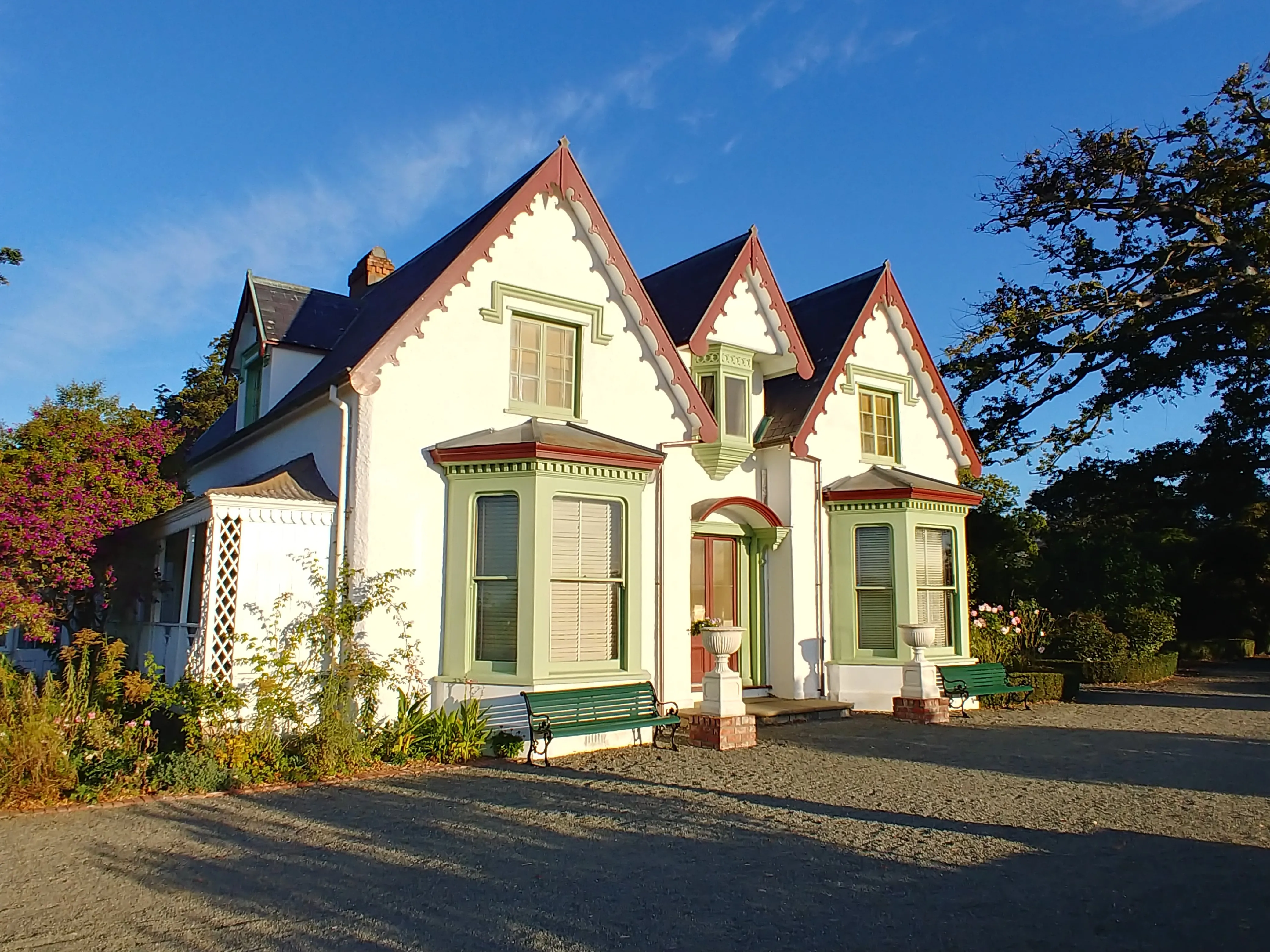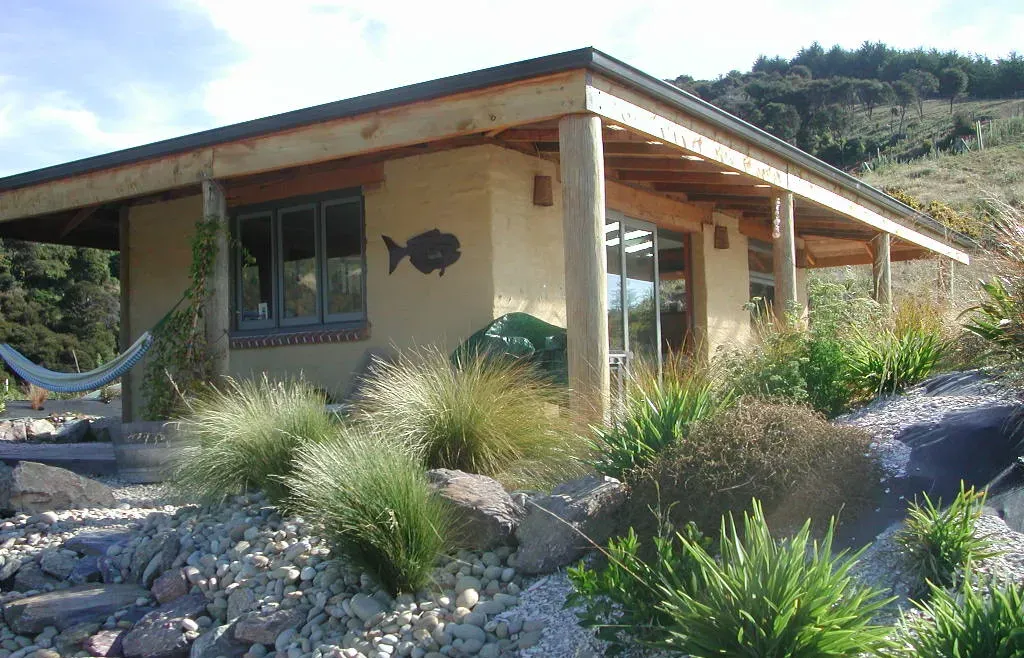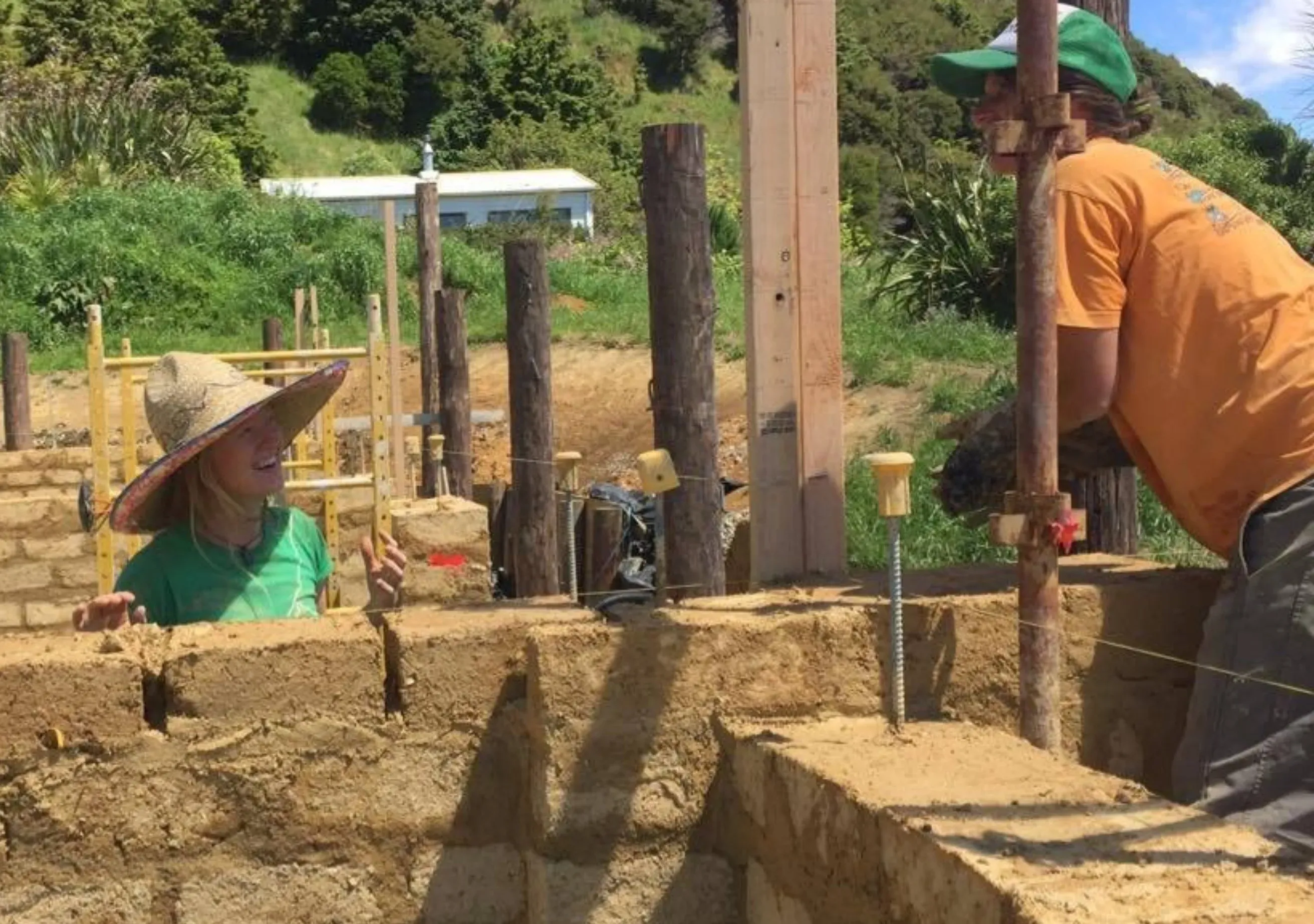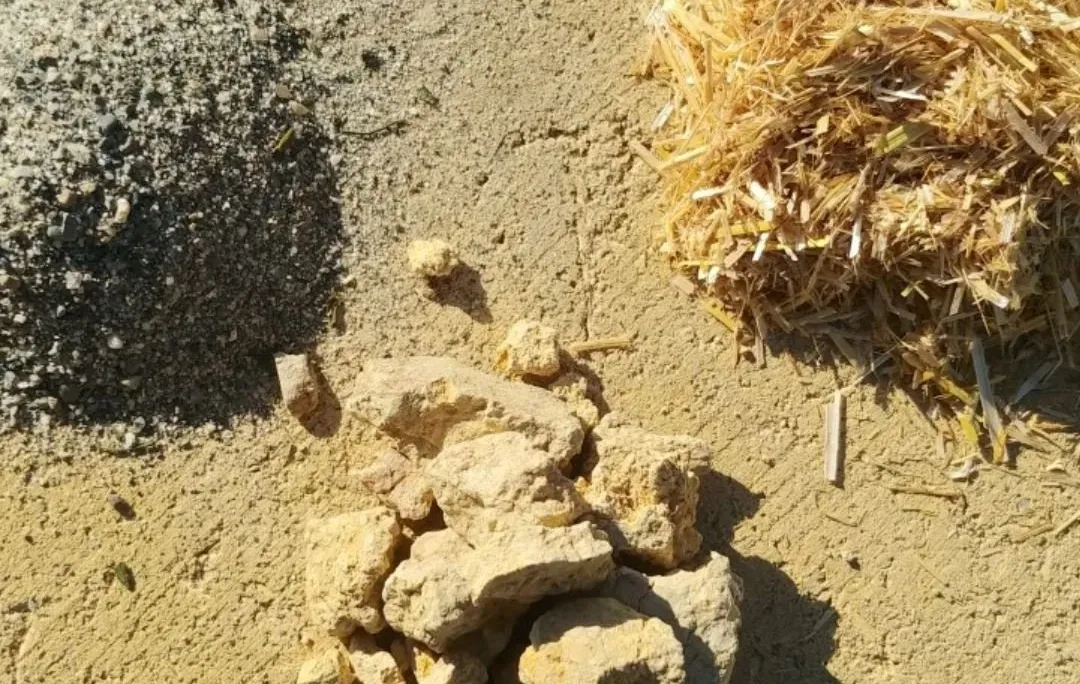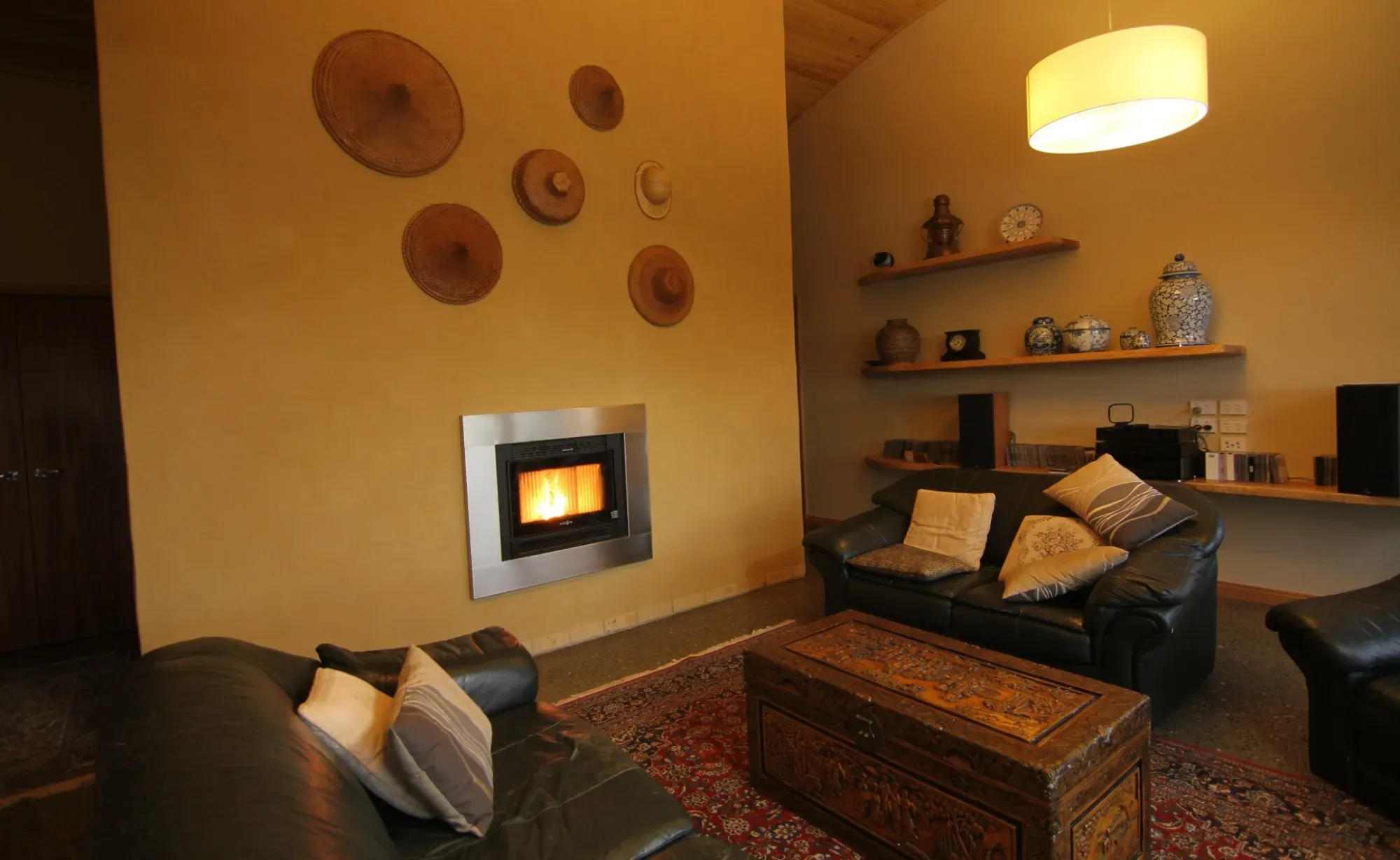Comparison of Rammed Earth and Adobe Brick Construction
Key Takeaways
- Rammed earth and adobe brick are both sustainable building materials with a rich historical legacy and modern appeal.
- Rammed earth construction involves compacting a mixture of damp earth materials within formwork to create solid, monolithic walls with an aesthetic of strata layers
- Adobe bricks are sun-dried blocks made from a wetter earth mixture that often has fiber added. They are made ahead of time and then used to build solid walls in masonry fashion.
- Both materials offer excellent thermal mass. Rammed earth is denser than Adobe. Adobe can be made low-density for better insulation values.
- The materials differ in cost, labor, and suitability for various climates.
- Understanding the characteristics of each material can guide builders and designers in choosing the right technique for their project.
The Essence of Earthen Construction: Rammed Earth vs. Adobe Brick
Defining Rammed Earth and Adobe Brick
When we talk about building with the earth, two methods often come to mind: rammed earth and adobe brick. Both have been used for centuries and even millennia, standing the test of time, and have seen a resurgence in popularity due to their eco-friendliness and aesthetic qualities. Rammed earth is a technique that involves tamping down moist earth mixtures in formwork, creating dense, sturdy walls with a very unique and striking look.
Adobe refers to individual units of sun-dried bricks that are cast in molds from a wet mix of earth and often fiber, sun-dried and then bonded together to form solid structures. Adobe walls either show off the bricks and mortar joints, or are finished with a plaster that conceals the individual masonry units. The look is solid and often has rounder lines than rammed earth.
Historical Significance and Modern Use
Historically, rammed earth and adobe brick equally have sheltered civilizations around the globe. Both techniques were used in monumental structures and domestic buildings alike. There are many breathtaking examples on most continents, of structures that are hundreds of years old and still inhabited or restored as heritage sites. The techniques were developed and chosen based on the types of locally available soils and access to other resources, such as timber for shutters. They also spread with migrations and conquerors, and often established in places depending on the knowledge of individual craftspeople.
Today, both techniques are favoured for their sustainability and thermal mass qualities, but which one is chosen often is based on the desired "look". The clean lines of rammed earth makes the technique more popular with architectural designers, while the adobe brick doesn't enjoy quite the popularity, and is often thought of as weaker.
Having professionally worked with different earth building techniques for over 30 years, we think it is important to choose the technique that best suits the resources and logistics of an individual building project and support our students and clients in determining that for themselves.
We also feel that the humble adobe brick deserves more attention, especially for self-build or community projects. Adobe brick is not bound to a certain look, and has been modernized to comply with building regulations even in earthquake prone areas and climates with lower temperature and driving rain.
Rammed Earth Construction
Materials and Building Process
Rammed earth is a blend of materials found right beneath our feet: gravel, sand, silt, and a small amount of clay. In many countries, a stabilizer like cement is added to the mix to improve its strength and weather resistance, but some of the most impressive modern rammed earth construction is done from raw earth, without stabilizers. These ingredients are layered and mechanically compacted inside temporary formwork, forming very solid and massive walls.
After tamping the walls layer by layer to the desired wall height, the formwork is then removed, revealing a wall with a beautiful, natural stratified texture, that's solid enough to last generations.
The typical density of rammed earth is around 2200kg/m3. Some systems incorporate a core of insulation into rammed earth walls, to achieve energy efficiency in cooler climates.
The key to successful rammed earth construction is getting the right mix and compaction. Too much moisture, and the compaction will not work the same way and the walls will shrink and crack. Too little, and the materials won't bind together. Compaction requires power tools like pneumatic rammers, which is why building with rammed earth can be labor-intensive and requires a bit of muscle. There is also a lot of materials and work in the shutters, as they have to be able to withstand considerable pressure during construction.
Longevity, Durability and Maintenance of Rammed Earth
Rammed earth walls are incredibly durable, with some structures lasting for thousands of years. They're resistant to pests like termites, and are fireproof. In seismic areas it is important to additionally reinforce rammed earth walls.
Maintenance is relatively low and easy to carry out, especially if no cement has been used as stabilizer; some practitioners might seal the walls with a breathable hydrophobic agent to protect against moisture, especially in wetter climates. Others optimize mineral aggregates and ram in drip edges of stone or lime, to reduce erosion. Over time, natural weathering will happen, but rammed earth buildings are overall very durable if they have been designed to modern standards and constructed well.
Adobe Brick Construction
Materials and Building Process
Adobe bricks are made of earth (sub-soil), often with the addition of short fibers, such as chopped straw, rice husks or in the case of low-density adobe, cellulose and wood shavings. Since the small masonry units dry and shrink during the production process, soils with much higher clay content are suitable for adobe. In fact, a wide range of sub-soils can be used without the need to amend the mix. In some countries, additional stabilizers such as bitumen, lime or cement are used in the mix. In our work we focus on using raw, unstabilized earth, as we have found there to be more advantages to going down this route.
Once dried, adobe bricks are laid up in a running bond similar to other masonry techniques, with an earth/clay mortar used to bind them together. It's a bit like building with giant, earthy Legos. The walls are usually thick, which gives them a high thermal mass. Depending on the amount of fibers used, it is also possible to make low-density adobe bricks which have a balanced amount of thermal mass and insulation, making them suitable for cooler climates. Densities of load-bearing adobe can range from 800-1700kg/m3.
Longevity, Durability and Maintenance of Adobe
Adobe structures have a natural resistance to the elements, but they do require mindful design and execution to ensure their longevity, especially in rainy climates and seismic zones. The key is to protect them from excessive moisture, which is typically done by constructive weather protection (elements such as foundations, roof overhangs, veranda or rainscreens, etc), and possibly breathable exterior finishes such as lime plasters. In seismic zones the walls have to be reinforced with vertical steel and possibly mesh in the mortar joints.
With proper care, adobe buildings can stand for centuries or even millennia. The maintenance is easy, especially if no stabilizers have been used in the mix. It is very important that the adobe walls are maintained to be breathable, as incompatible surface finishings can lead to deterioration and even failure.
Head-to-Head: Performance and Properties
Thermal Efficiency: Insulation and Temperature Regulation
Both rammed earth and adobe are champions of thermal mass, which makes them excellent at regulating indoor temperatures. When designed with passive solar principles in mind, both systems work well.
In cooler climates however, the earthen walls have to be additionally insulated.
Rammed earth achieves this either through systems like SIREWALL, or insulation attached to the exterior of the walls (which has to be additionally finished). Adobe can be produced with mixes that are much lighter than rammed earth. Low-density adobe bricks have good insulation values, and can be used in load-bearing wall systems. Adobe buildings can also be combined with layers of insulation, which is a bit more complicated.
Structural Strength and Earthquake Resilience
When it comes to strength, rammed earth can have an edge. The monolithic walls are less vulnerable than walls built from masonry units. However, both materials have to be tested and can be engineered to meet modern building codes and withstand natural disasters with the right design and reinforcements.
Rammed earth is much more complex than adobe. There are many factors that can influence the quality and strength. Low-density adobe bricks are lighter and often stronger than traditional mud bricks, reducing the seismic load during an earthquake. For seismic zones they are installed according to the NZ Earth Building Standards and have very good structural performance.
Cost Comparison and Labor Investment
Rammed earth tends to be more expensive upfront due to the need for formwork and machinery for compaction. The mixes have to be engineered, and if you intend to work with structural insulated rammed earth it is a patented process, so it is common for rammed earth to be carried out by specialized building companies. Rammed earth is streamlined when a company specializes in it and has all the required gear, which comes at a cost.
Adobe brick is generally less costly, as the bricks can be made on-site with minimal equipment, but it requires more time for the bricks to dry. Generally, a lower skill level is required for adobe. Adobe is very suitable for self-builders, and requires minimal gear and no timber for shuttering. In our experience the adobe technique is less labour intensive, as the process is “bite-sized” and simple. Adobe is suitable for community projects and can be done very low-key, or with some level of mechanization, bought bricks, professional input. This means that the cost of adobe has a wider range.
Both methods are labor-intensive, but the overall effort is comparable to some conventional building methods. For bigger projects, it is advisable to use machinery for mixing, as there is a lot of labour in that part of the process. With right planning, both the production and the construction process can be streamlined. We are passionate about supporting clients and students finding the right approach to logistics, to streamline the process from start to finish.
Environmental Footprint: Sustainability of Materials
Sustainability is a significant advantage of both rammed earth and adobe brick. Both techniques use local materials, which reduces the carbon footprint associated with transportation. They don't require burning or high-energy processes for manufacturing, unlike conventional bricks or concrete. This makes them a low-tech, low-impact choice for environmentally conscious builders.
However, the stabilization and insulation strategies in rammed earth will greatly affect the energy efficiency and sustainability impacts. Low-density adobe in particular can be carbon sequestering, and have close to zero environmental impacts, all while having good energy efficiency performance.
FAQs
Can Rammed Earth and Adobe Brick Be Used in Wet Climates?
Yes, with some caveats. The weather-proofing strategies vary between the techniques. Rammed earth relies on the addition of stabilizers or careful engineering of the aggregates, while adobe brick buildings generally rely on a weatherproofing strategy that weighs up the material performance with constructive weather protection such as roof overhangs and protective plasters.
How Do Rammed Earth Walls Handle Heavy Roofs?
Both rammed earth and adobe walls are strong enough to support heavy roofs, especially if they're engineered with internal reinforcement. The key is to distribute the load evenly across the top of the walls, make sure that the roof-to-wall connection is well-engineered, and use roofing materials and design that is appropriate for the local climate and conditions.
Are Adobe Buildings More Cost-Effective than Conventional Ones?
Adobe buildings can be more cost-effective due to the low cost of materials and the potential for community or self-builder involvement in the building process. Maintenance of adobe buildings is also simple and cheap, so over the lifespan of the building there potentially are more savings to be made. Depending on the thermal performance of the earthen building it could also be cheaper in use, due to energy savings.
What Are the Best Ways to Protect Earthen Buildings from Earthquakes?
The best ways to protect earthen buildings from earthquakes include using reinforcements like bamboo, timber, or modern steel rebar, designing for seismic forces, and adhering to local building codes that account for earthquake resilience. Different countries have different approaches to seismic design, but the NZ Earth Building Standards have a very thorough approach that is internationally relevant. They are very useful for self-builders, and cover material assessment, testing, construction and design.
How Long Do Rammed Earth and Adobe Brick Structures Last?
With proper design, construction and maintenance, rammed earth and adobe structures can last for centuries. Historical buildings around the world have stood for a very long time, proving the durability of these materials when they are well cared for.
In conclusion, both rammed earth and adobe brick construction offer unique benefits and challenges. By understanding their differences and the specific conditions under which they excel, you can make an informed choice that aligns with your environmental values, aesthetic preferences, and practical needs. These earthen techniques are more than just building methods; they're a connection to the earth and to history, offering a sustainable path forward in the world of construction.
Our 3-month online program Earth Building Academy covers the design and construction of load-bearing earth wall systems in detail. While we focus on the Adobe technique because it is the easiest technique to initially get into, the program also includes a guest lectures on rammed earth by Jomo Zeil from Erden, who carry out large scale projects in Europe.

